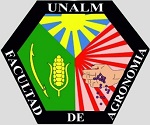Spray penetration into asparagus (Asparagus officinalis L.) canopy using different nozzle inclinations and application rates
DOI:
https://doi.org/10.21704/pja.v4i1.1464Keywords:
Sprayer, nozzle, pesticide, application technology, depositionAbstract
Asparagus (Asparagus officinalis L.) is a difficult crop to treat with spraying pesticides because its architecture makes it difficult for droplets to penetrate inside of the canopy, where its pests are located. This study aims to examine the influence of operational parameters, such as nozzle inclination and application rates on the inner side of the canopy. We installed nozzles in the spray boom and its droplegs in three different inclinations: 0° with the plant, 30° in the direction of movement of the tractor-sprayer assembly (+30°), and 30° in the opposite direction (−30°). We applied the mixture in application rates of 600, 900, and 1,200 L ha−1. More so, the regulation used by the farmer of 0° and 800 L ha−1 was applied as a control. Copper (Cu) was used as a tracer for the mixture in a dose of 13.5 g ha−1. Also, non-plasticized polyvinyl chloride grooved tubes (PVC) were installed inside the asparagus canopy and polyethylene sheets were placed on the pipes at different heights from the ground. Later, we analyzed the sheets with atomic absorption spectrophotometry. Results showed that the nozzle inclination and sampling height had notable effects on the copper deposit. Conversely, different application rates showed no varied effects significantly. The greatest copper deposition in the asparagus canopy was achieved with a nozzle inclination of +30° with any application rate. Finally, we recommend regulating the sprayers with a nozzle inclination of +30° and an application rate of 600 L ha−1 as the most effective adjustment for the distribution of pesticides and represent the lowest cost of operation since there is no influence of the application rate.Downloads
References
Apaza, W., Quiroz, P., & Julca-Otiniano, A. (2019). Characterisation of avocado and asparagus farms in the Chavimochic irrigation project in La Libertad, Peru. Peruvian Journal of Agronomy, 3(3), 91–103. http://dx.doi.org/10.21704/pja.v3i3.1342
Bustillo, A. (2009). Evaluación de insecticidas químicos y biológicos para controlar Frankliniella occidentalis (Thysanoptera: Thrypidae) en cultivos de espárrago. Revista Colombiana de Entomología, 35(1), 12–17. http://www.scielo.org.co/scielo.php?script=sci_arttext&pid=S0120-04882009000100003&lng=en&nrm=iso
Camborda, F., Castillo, J., & Rodríguez, S. (2015). Trampas de luz con panel pegante para la captura de adultos de Prodiplosis longifila Gagné (Diptera: Cecidomyiidae) en el cultivo de espárrago. Ecología Aplicada, 14(2), 139–145 http://www.scielo.org.pe/scielo.php?script=sci_arttext&pid=S1726-22162015000200006&lng=es&tlng=es
Castillo, J. (2019). Desarrollo de un Programa de Manejo Integrado de Plagas para Espárrago (Asparragus officinalis L.) en la Irrigación de Chavimochic. [Doctoris Phillosophiae thesis, Universidad Nacional Agraria la Molina]. La Molina Repository. http://repositorio.lamolina.edu.pe/bitstream/handle/UNALM/3758/castillo-valiente-jorge-ramon.pdf?sequence=1&isAllowed=y
da Cunha, J., Victor, A., & Sales, C. (2018). Spray deposition on soybean crop using different travel speeds and application rates. Engenharia Agricola, 38(1), 82–87. http://dx.doi.org/10.1590/1809-4430-Eng.Agric.v38n1p82-87/2018
Foqué, D., & Nuyttens, D. (2011). Effects of nozzle type and spray angle on spray deposition in ivy pot plants. Pest Management Science, 67(2), 199–208. https://doi.org/10.1002/ps.2051
Knott L. (1987). Spraying equipment for different plant protection treatments in asparagus. Gesunde Pflanzen, 39, 19–23.
Ministerio de Agricultura y Riego. (2020). Serie de estadísticas de producción agrícola (SEPA). Espárrago – Superficie cosechada. [Data set] http://frenteweb.minagri.gob.pe/sisca/?mod=salida
Panisson, E., Boller, W., & Reis, E. (2004). Avaliação da deposição de calda em anteras de trigo, para o estudo do controle químico de giberela (Gibberella zeae). Engenharia Agrícola, 24(1), 111–120. https://doi.org/10.1590/S0100-69162004000100013
Pergher, G., Zucchiatti, N., & Gubiani, R. (1999). Influence of spray application parameters on deposition in an asparagus crop. Journal of Agricultural Engineering Research, 73(1), 19–28. https://doi.org/10.1006/jaer.1998.0386
Ortega, E., Ureta, C., Mayanga, A., Morey, G., Graterol, L., Dyer, P., & Mialhe, E. (2014). Identificación molecular de la mosquilla del brote Prodiplosis sp. Gagné en los cultivos de Asparagus officinalis L. por amplificación parcial del gen citocromo oxidasa I. Idesia, 32(4), 29–41. http://dx.doi.org/10.4067/S0718-34292014000400005
Sánchez-Hermosilla, J., Páez, F., Rincón, V. J., & Pérez-Alonso, J. (2013). Volume application rate adapted to the canopy size in greenhouse tomato crops. Scientia Agricola, 70(6), 390–396. https://doi.org/10.1590/S0103-90162013000600003
SAS Institute. (1999). SAS/STAT User’s guide 8.0. Cary, 1999. Toolbox. CD - ROM.
Scodellaro, M. (1995). Asparagus: Defense strategies for the control of Stemphylium and Fusarium. Informatore Agrario, 51, 39–41.
Travis, J., Sutton, T., & Skroch, W. (1985). A technique for determining the deposition of heavy metals in pesticides. Phytopathology, 75(7), 783–785. https://www.apsnet.org/publications/phytopathology/backissues/Documents/1985Articles/Phyto75n07_783.PDF
Vásquez-Castro, J. A. (2012). Resistencia a insecticidas en poblaciones peruanas de Spodoptera frugiperda procedentes de campos de Espárrago. Proceedings of the 58th ISTH Annual Meeting Interamerican Society for Tropical Horticulture, 9, La Molina, Lima.
Vásquez-Castro, J. A. (2013). Residuo de plaguicidas en el ambiente. Revista Agronomía, 50, 36–45.
Véliz, R., Gadanha Jr, C., & Vásquez-Castro, J. (2010). Eficiencia de dos sistemas para la aspersión de plaguicidas en árboles de cítricos. Revista Colombiana de Entomología, 36(2), 217–222. http://www.scielo.org.co/scielo.php?script=sci_arttext&pid=S0120-04882010000200007&lng=en&nrm=iso
Zhu, H., Rowland, D. L., Dorner, J. W., Derksen, R. C., & Sorensen, R. B. (2002). Influence of plant structure, orifice size, and nozzle inclination on spray penetration into peanut canopy. Transactions of the ASAE, 45(5), 1295–1301. http://doi.org/10.13031/2013.11058










